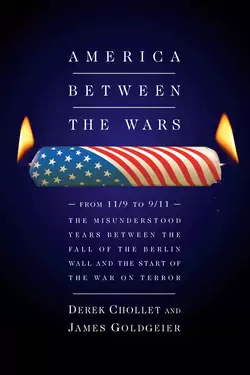
America Between the Wars
From 11/9 to 9/11

A compelling narrative of how the decisions and debates of the years between the fall of the Berlin Wall and the collapse of the World Trade Center towers shaped the events, arguments, and politics of the world we live in today.
- Book
- Foreign policy analyses written by CFR fellows and published by the trade presses, academic presses, or the Council on Foreign Relations Press.
Read an excerpt of America Between the Wars.
When the Berlin Wall collapsed on November 9, 1989—signaling the end of the Cold War—America and the West declared victory: democracy and free markets had prevailed and the United States emerged as the world's triumphant superpower. The finger-on-the-button tension that had defined a generation was over, and it seemed that peace was at hand.
More on:
But in their new book, America Between the Wars: From 11/9 to 9/11, Center for a New American Security's Derek Chollet and Council Senior Fellow James M. Goldgeier write that it is a mistake to dismiss the twelve years between 1989 and 2001 as a "holiday from history." Just as history did not end on 11/9, it did not begin on 9/11.
America Between the Wars shows that the challenges confronting America today—the struggle with Iraq, tensions with allies, combating extremist forces determined to spread terror, responding to the violent breakdown of states, stemming the proliferation of weapons of mass destruction, managing the economy in an era of dramatic technological revolution, and choosing when to send American soldiers, sailors, airmen, and marines to fight—did not start on 9/11. They began when the Cold War ended more than a decade earlier, and the Democrats and Republicans are still struggling with the consequences—and will continue to do so when a new president takes office in 2009 and beyond.
Drawing on interviews with leaders across the political spectrum, from Colin Powell and Newt Gingrich to Madeleine Albright and Robert Rubin to Pat Buchanan and Ralph Nader, as well as using declassified government documents, America Between the Wars shows how liberals and conservatives reacted to the collapse of communism and tried to refashion themselves to forge a new kind of politics. It also tells the story of how America's leaders grappled with a moment of dramatic change—offering fresh insights on the successes they achieved and the opportunities they missed.
A Council on Foreign Relations Book
More on:
 Online Store
Online Store